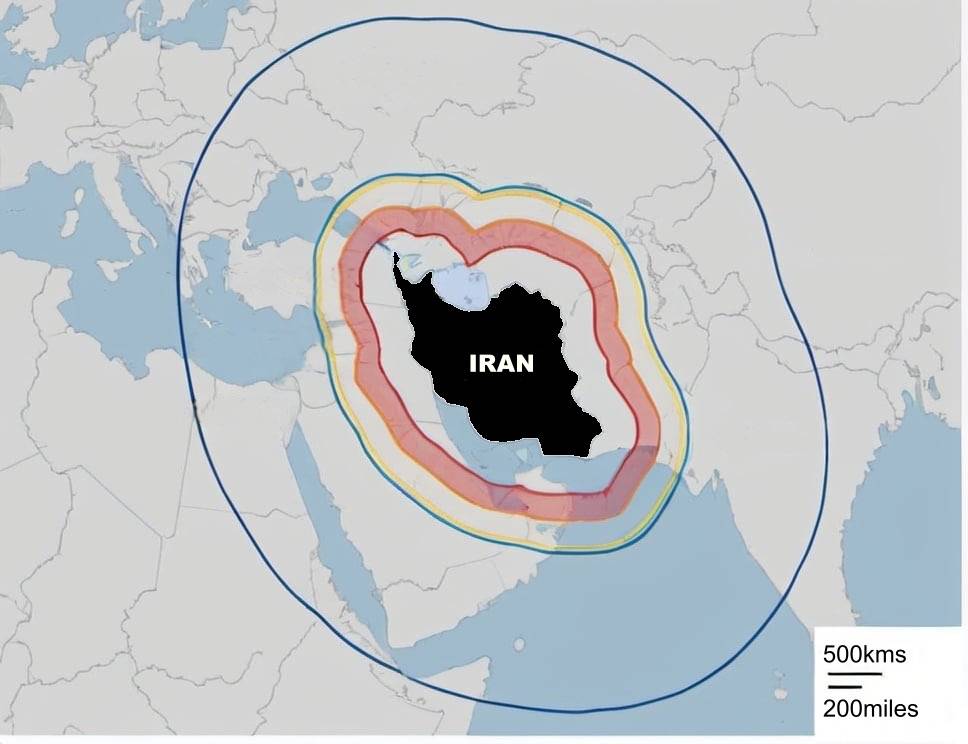For months, speculation has swirled about the potential for the conflict in Gaza to spiral into a broader regional crisis. Late on April 13th, Iran launched a barrage of attack drones to Israel, followed by missiles. What are Iran’s strategic goals?
The Iranian strikes come as retaliation for an Israeli air raid on April 1st, 2024, which resulted in the death of seven individuals, including a prominent Iranian general, at the country’s embassy compound in Damascus. Supreme Leader Ali Khamenei vowed that the “malicious Zionist regime will be punished,” signaling Iran’s determination to retaliate against perceived aggression.
Earlier in the day, Iranian forces intercepted a ship in the Strait of Hormuz, alleging its ties to Israel. However, it is the missile strikes and drone onslaught that mark a significant escalation in hostilities. This marks the first instance where Iran has directly targeted Israel from its territory, underscoring the gravity of the situation.

While Israel possesses the capability to address the immediate threat posed by the Iranian attacks, the looming question remains: how will Israel respond, and what are the implications for regional stability? With decades of animosity and the specter of all-out war looming, the prospect of wider conflict draws concerns not only for the region but also for the involvement of global powers like the United States.
Logic Behind the Proxy Wars
In recent years, Iran’s foreign policy has prominently featured the use of proxy warfare, a tactic involving support to allied militias and terrorist groups across the Middle East and beyond. This strategy allows Iran to exert significant influence while maintaining a degree of plausible deniability. But what are the reasons behind Iran’s belligerence?
Strategic Objectives:
- Regional Hegemony: Iran seeks to cement its role as a dominant power in the Middle East, challenging rival states and extending its influence across strategic locations, including Syria, Yemen, and Lebanon.
- Asymmetric Warfare: By supporting militias and non-state actors, Iran engages in a low-cost, high-impact strategy to counter more technologically advanced adversaries like the USA and Israel.
- Ideological Export: Since the 1979 Islamic Revolution, Iran has aimed to export its revolutionary ideology, using proxy groups to spread its influence and Shiite theology.
Political Reasons:
- Avoidance of Direct Conflict: Utilizing proxies allows Iran to avoid direct military engagement, which could lead to international backlash and more severe repercussions.
- Internal Power Dynamics: The significant role of the Islamic Revolutionary Guard Corps (IRGC) and its Quds Force in foreign conflicts enhances their stature within Iran’s political landscape, often at the expense of more moderate political elements.
Key Proxies and Regions of Influence:
Middle East:
- Hezbollah in Lebanon: A key ally, providing military and logistical support to bolster Iran’s strategic interests against Israel.
- Houthi Rebels in Yemen: Supported by Iran, they have engaged in significant conflicts against Saudi-led forces, impacting major shipping routes and escalating regional tensions.
- Shiite Militias in Iraq: These groups have bolstered Iran’s influence in Iraq, particularly following the power vacuum left by the U.S. invasion in 2003.
Beyond the Middle East:
- Support in Syria: Iran has been a staunch supporter of the Bashar al-Assad regime, facilitating militia support to maintain its ally in power amid the civil war.
- Influence in Gaza: Through groups like Hamas and Palestinian Islamic Jihad, Iran has engaged in a proxy war against Israel, contributing to recurring cycles of conflict in the region.
Game Of Destabilization
The proliferation of proxy warfare by Iran poses significant challenges not only to regional stability but also to international efforts to mitigate conflict and promote peace. The involvement of proxies in various conflicts has led to widespread devastation, loss of life, and the destabilization of entire regions, complicating diplomatic efforts and humanitarian interventions.
Iran’s strategic use of proxy warfare emphasizes a complex interplay of ideological ambitions and geopolitical tactics. While it has allowed Iran to expand its influence significantly, it also perpetuates conflict and instability. Understanding the motivations and mechanisms behind Iran’s proxy engagements is crucial for formulating effective responses to mitigate regional threats and foster long-term peace in the Middle East and beyond. After the latest escalation, understanding Iran and its objectives is ever more crucial.
Read More:
- BBC: What was in wave of Iranian attacks and how were they thwarted?
- The Economist: Iran attacks Israel, risking a full-blown regional war
- Brookings: The path forward on Iran and its proxy forces
- CSIS: War by Proxy: Iran’s Growing Footprint in the Middle East
- Council On Foreign Relations: Iran’s Regional Armed Network
- Gulf International Forum: Scrutinizing Iran’s Foreign Proxy Network



